#Melita Thomas
Explore tagged Tumblr posts
Text
Mary wrote to Cromwell on 26 May [1536]. Even if this were in response to Lady Kingston's visit, the speed with which Mary sought reconciliation with Henry demonstrates her genuine belief that it had been Anne keeping her father from her. According to Chapuys, the letter in no way resembled the draft Cromwell had drawn up. Mary apologised for her bad handwriting, saying she had written very little for over two years and was only able to do so now, because Lady Kingston had given her means. Since we know she had communicated regularly with Chapuys, she was either lying, or her messages to him were verbal. We also know she had sent letters to Mary of Hungary and Gattinara [...]
The King's Pearl: Henry VIII & His Daughter Mary, Melita Thomas
#yeah; this letter is a very interesting example of self-fashioning...#the image she's crafting to present to her father is one of the humble penitent#ie it's imperative to suggest wherever she can that all she has done is follow his instruction#even tho we know that's likely not the case#melita thomas#(lancelot de carles also maintains that she kept up with her studies during this time; even tho her formal education had officially ended#which would also suggest otherwise...re: 'not having means to write'#)(and we know she sent at least one letter to the emperor; too)#and that she managed to transcribe a letter chapuys believed anne boleyn or anne shelton had contrived to leave behind in the chapel#for her to find#and send it to him
12 notes
·
View notes
Text
‘1000 Tudor People’ by Melita Thomas
Genre: Adult Non-Fiction – Historical Biography Published: 2024 Format: Hardback Rating: ★★★★★ What a brilliant book! Despite being a Tudor historian there were quite a few people here I hadn’t heard of, and from all walks of life – kings, queens, nobles, playwrights, poets, pirates, merchants, thieves, and murderers. It made for a really fascinating read with the names I recognised and knew…

View On WordPress
#1000 Tudor People#Anne Boleyn#Anne of Cleves#Book#Book Review#Catherine Howard#Catherine of Aragon#Catherine Parr#Edward VI#Elizabeth I#Elizabeth of York#Henry VII#Henry VIII#Historical#History#Jane Seymour#Katherine Howard#Katherine of Aragon#Katherine Parr#Mary I#Melita Thomas#Review#Tudor#Tudors
2 notes
·
View notes
Note
I’ve kinda been interested in learning about royal scandals and drama from history (like could be anywhere in history besides the Princess Diana, Prince Charles, Prince Harry & Meghan stuff since there’s lots of info on that), but every time I try to look it up I just get random websites like “Top 10 Craziest Royal Scandals”. Any source or particular scandal/drama that you’d recommend looking into/starting with?
Here are just a few:
Margaret Campbell, the Dirty Duchess
Catherine of Valois marries Owain ap Tudur
Jacquetta of Luxembourg marries Richard Woodville
The Duke of Cumberland "murders" his valet
Empress Alexandra Feodorovna's letters to Rasputin get leaked
Albert Victor, Duke of Clarence and Avondale gets caught up in both the Jack the Ripper and Cleveland Street scandals.
The death of Madame Araujo and Tsar Alexander I's cover up of her death
The Black Masses and Madame de Montespan
The "poisoning" of Henriette, Duchess d' Orleans
The exile of Julia, daughter of Augustus.
Lady Seymour Worsely
The disappearance of Lord Lucan
The death and coronation of Inez de Castro
The death of Thomas Overbury
Affair of the Poisons
George IV and Maria FitzHerbert
Lola Montez
The death of Ludwig II
The Banquet of Chestnuts
The marriage of Archduke Franz Ferdinand of Austria and his wife, Sophie, Duchess of Hohenberg
The exploits of Sabina, Empress of Rome
The fall of Sejanus
The marriage of Victoria Melita and Grand Duke Kirill
The imprisonment of Sophia Dorothea of Celle and the death of Königsmarck
The loves of Catherine the Great
The marriage of Louis and Edwina Mountbatten
The death of Amy Robsart
The Mayerling Incident
The Kotze Scandal
The death of Infante Alfonso of Spain
The Tour de Nesle Affair
Peter Townsend
George, Duke of Kent and the girl with the silver syringe
Affair of the Diamon Necklace
Wallis Simpson and Herr Ribbentropp
There's a great podcast that just focuses on scandals on Spotify, it's Trashy Royals, you should give it a listen!
36 notes
·
View notes
Text
The stereotype of Mary for centuries has been that of an unskilled political novice, hesitant and timid until religious mania and her devotion to a heartless, Spanish husband turned her almost overnight into a bloody tyrant. In recent years, that myth has been examined and the negative accounts of her reign shown to be influenced by centuries of propaganda. Unfortunately, Bloody Mary is now becoming Tragic Mary. The trauma of her youth and the suffering she and her mother experienced at her father’s hands are seen as a reason to pity a queen many perceive as a failure. But there is more to the story of Mary than tragedy – and more to her than the devoted daughter of an abandoned mother because Mary, although she is usually associated with her mother Katharine of Aragon, was very much her father’s daughter. He too, was a risk-taker.
Melita Thomas, The King's Pearl
127 notes
·
View notes
Text
1897
Portrait of Princess Elisabeth of Hesse (1895-1903)
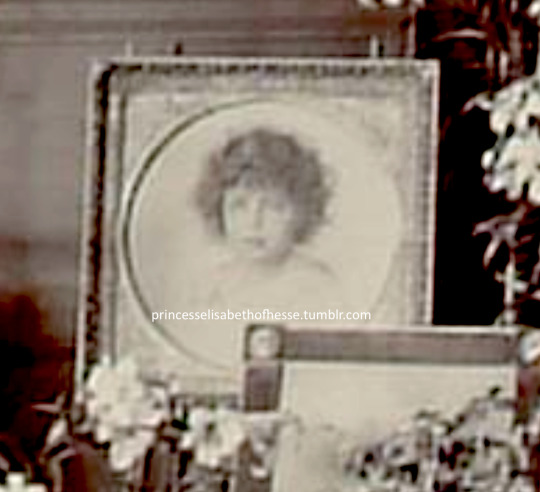
Portrait of Princess Elisabeth of Hesse, dated 1897.
The author is unknown, but according to art historian and expert Thomas Aufleger, it could be Kaulbach. Although he possibly met Elisabeth in 1903, he painted Victoria Melita earlier and this portrait could have been drawn in the same occasion.
The portrait above was once in Victoria Melita's Salon in the Neues Palais. The photo below was taken in 1897 by Joseph Magnus.
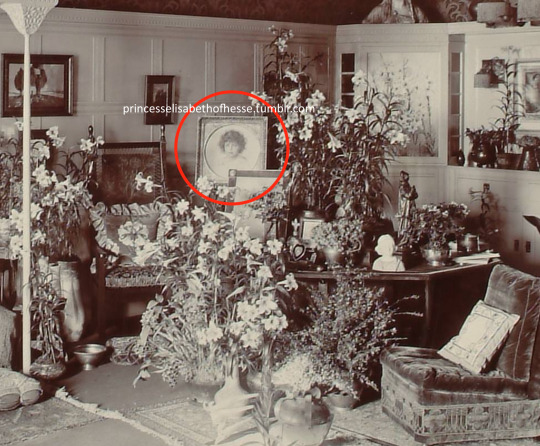
source: Hessisches Staatsarchiv Darmstadt. Thank you Thomas for the info!
Apart from this portrait, 2 more portraits of Elisabeth were made in 1897:
-Portrait (probably dating 1897) by court painter Heinrich Reinhard Kröh (1841-1941). It shows Elisabeth sitting on the floor (in profile), dressed up in white lace and playing with one of her many dogs.
-Art-Noveau watercolour by Joseph Hartmann showing Elisabeth in Grand Duchess Alice's rotunda reception room at the Neues Palais in 1897.
24 notes
·
View notes
Text
2024 olympics Chile roster
Archery
Andrés Gallardo (Santiago)
Athletics
Martín Sáenz (Santiago)
Hugo Catrileo (Saavedra)
Carlos Díaz (Santiago)
Claudio Romero (Santiago)
Gabriel Kehr (Temuco)
Humberto Mansilla (Temuco)
Martina Weil (Santiago)
Natalia Duco (San Felipe)
Ivana Gallardo (Osorno)
Canoeing
Paula Gómez (Santiago)
María Mailliard (Viña Del Mar)
Karen Roco (Constitución)
Cycling
Mauricio Molina (Santiago)
Martín Vidaurre (Santiago)
Catalina Soto (Santiago)
Macarena Pérez (Santiago)
Equestrian
Agustín Covarrubias (Santiago)
Fencing
Arantza Inostroza (Santiago)
Golf
Joaquín Niemann (Jupiter, Florida)
Guillermo Pereira (Jupiter, Florida)
Judo
Thomas Briceño (Santiago)
Mary Vargas (Santiago)
Pentathlon
Esteban Bustos (Santiago)
Rowing
César Abaroa (Concepción)
Eber Sanhueza (Puerto Montt)
Antonia Abraham (San Pedro De La Paz)
Melita Abraham (San Pedro De La Paz)
Sailing
Clemente Seguel (Temuco)
María Poncell (Santiago)
Shooting
Diego Parra (Santiago)
Francisca Crovetto (Santiago)
Swimming
Eduardo Cisternas (Santiago)
Kristel Köbrich (Córdoba, Argentina)
Table tennis
Nicolás Burgos (Santiago)
María Vega (Concepción)
Zeng Zhiying (Iquique)
Taekwondo
Joaquín Churchill (Santiago)
Fernanda Aguirre (Santiago)
Tennis
Marcelo Barrios (Santiago)
Nicolás Jarry (La Barnachea)
Alejandro Tabilo (Santiago)
Triathlon
Gaspar Riveros (Providencia)
Diego Moya (Santiago)
Volleyball
Marco Grimalt (Linares)
Esteban Grimalt (Santiago)
Wrestling
Néstor Almanza (Santiago)
Yasmani Acosta (Santiago)
2 notes
·
View notes
Text

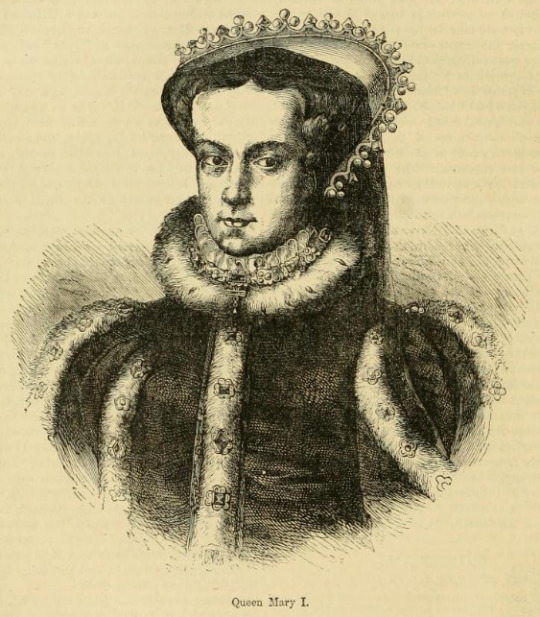
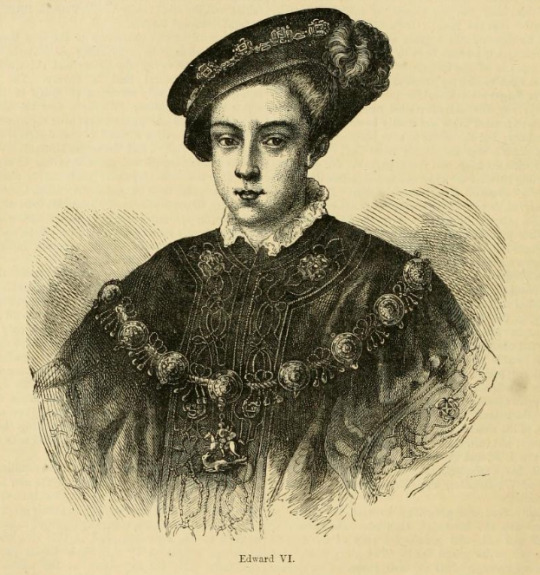


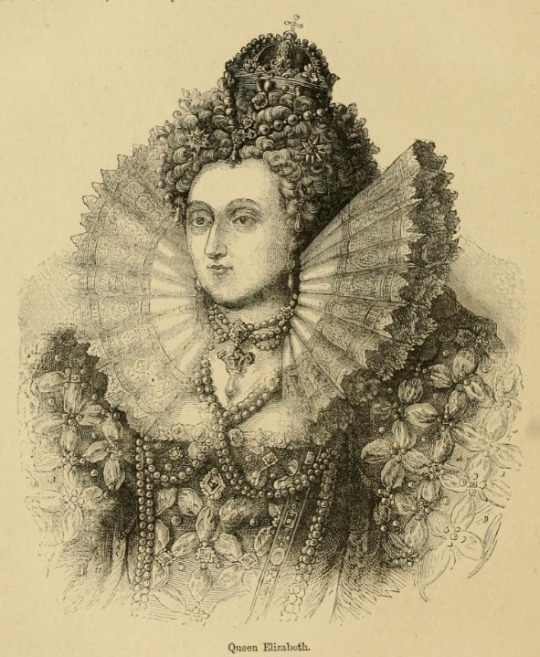
Mary I and her siblings Elizabeth I and Edward VI
"On 21 July[1536], Mary sent a letter to her father [...] she praised 'my sister, Elizabeth' as a 'child toward (forward and clever for her age)' in whom she thought Henry[VIII] would 'rejoice in time coming'" The kings pearl by Melita Thomas. "Right dear and entirely beloved sister, We greet you well. [...] And thus we pray God to have you in his holy keeping. [...] Your loving sister, Mary the Quene" Mary in a letter to Elizabeth, 26 January 1554.
"Mary received another very sweet letter from [Edward VI] in May 1546. In it, he again apologized for not writing very often, and went on to say that he loved her just as much as if he wrote to her frequently. Although he did not wear his best clothes very often, he loved them most, so, although he rarely wrote to her, he loved her best" The kings pearl by Melita Thomas. Edward, now twelve, rebuked Mary for hearing Mass in the chapel. [...] He demanded her obedience, she resisted, and both were reduced to tears." Mary Tudor: Princess, Bastard, Queen by Anna Whitelock.
Pictures are stills from the shows The Tudors and Becoming Elizabeth, and drawings from John Cassell's Illustrated History of England, Volume II, 1865
(For foreverinthepagesofhistory's 300 follower challenge day 1)
15 notes
·
View notes
Text
“lady kingston had two errands. the first was a personal one, a message from anne who had expressed remorse for her treatment of mary and for having conspired her death – by which she had probably meant in the general sense of wanting mary executed for failure to swear the oaths, rather than admitting any poison plot.” (from melita thomas)
unintentionally very funny quote 💀
2 notes
·
View notes
Text
Mary was sufficiently recovered by late September to write to Sir Nicholas Carew, a gentleman of Henry's Privy Chamber, and an old friend of the king's. Mary had known his for many years, and he was her loyal supporter. This immediately aroused suspicion and Lady Shelton was asked by Henry to [investigate]. Mary told Lady Shelton the letter had been taken by her servant, Randall Dodd, and a response had been received from Carew's wife, Elizabeth. [...] Lady Carew had sent an open letter, urging Mary 'for the Passion of Christ' to obey her father, or she would be utterly undone. Lady Bryan confirmed the truth of the statement. Nevertheless, Henry was right to be suspicious. Lord Hussey and Darcy had both told Chapuys that an invasion by Charles V would have much popular support and Carew was no friend to Anne [...] The mention of Dodd, who had been in Mary's household since 1525, suggests she was not as isolated as Chapuys claimed.
the king's pearl / melita thomas
#doesn't mantel write her as having convinced mary to swear to the oath in 1536 as well...?#ofc by cromwell's persuasion but. im guessing that's where she got that from.#but the whole story has the vibe of intrigue. the 'open letter'. its contents.#i wonder if there was a code or hidden message to it that only mary would understand#at the same time it could just be what it looks like on the surface: even mary's own supporters encouraging her to dissemble#believing she could influence her father's policy and undermine her rivals if she was actually at court#which would only be possible with the submission...#i'll have to decide for my carew arc in NT. anyways!#NT notes#also 'lady bryan confirmed the statement' i mean...yeah. lady carew was her daughter tho#she would have a vested interest in doing that to protect her
1 note
·
View note
Text

Watch Skeem Saam February 2025 Teasers Skeem Saam February 2025 Teasers Get ready for a month filled with drama, suspense, and unexpected twists in Skeem Saam this February 2025. As relationships are tested, secrets unravel, and power struggles intensify, viewers can expect an emotional rollercoaster that will leave them on the edge of their seats. Here’s what’s coming up: Week 1: A Month of Tough Decisions and Unforeseen Challenges Monday, 3 February 2025 – Episode 156A young couple finds themselves in the midst of an unforeseen challenge. Meanwhile, Melita’s excitement over a new opportunity sparks tension with Mr. Kgomo. On the other hand, Phomolo makes a significant move as he plans to pay lobola for Pretty. Tuesday, 4 February 2025 – Episode 157Elizabeth faces a life-altering decision. Elsewhere, someone begins to suspect that Mapitsi’s professional relationship with a colleague may be more than just work. Meanwhile, Melita sacrifices a personal dream to appease Mr. Kgomo. Wednesday, 5 February 2025 – Episode 158Kwaito struggles to cope with his wife’s life-changing choice. Meanwhile, Melita discreetly works towards elevating her personal and professional life. Mapitsi and DJ Thomas find themselves entangled in a risky situation that could have serious consequences. Thursday, 6 February 2025 – Episode 159The strain on Kwaito and Lizzy’s relationship reaches a breaking point. Meanwhile, in prison, Lehasa is confronted with looming threats after a chilling warning from Vader. Friday, 7 February 2025 – Episode 160In desperation, Kwaito makes a bold decision—one that could cost him dearly. Melita is left shaken when a figure from her past unexpectedly resurfaces. Sesi Bertha stumbles upon a disturbing incident she was never meant to witness. Week 2: Consequences, Betrayal, and Unfolding Secrets Monday, 10 February 2025 – Episode 161MaNtuli’s relentless pressure pushes Kwaito to his limit, leading to an act he may regret. Meanwhile, Thomas publicly humiliates Mapitsi, leaving Tbose stunned. Melita finally opens up to Mr. Kgomo about the real reason she missed out on the pageant opportunity. Tuesday, 11 February 2025 – Episode 162MaNtuli gets an unexpected surprise when she arrives at Jacobeth’s house, spewing insults. Melita takes a courageous step towards advancing her career. Elsewhere, Tbose is crushed as he discovers the struggles his brother has been facing in silence. Wednesday, 12 February 2025 – Episode 163Melita pitches an ambitious business proposal to Mr. Kgomo. Meanwhile, Dr. Blue issues a stern warning, pushing Lehasa to acknowledge the imminent danger surrounding him. Thursday, 13 February 2025 – Episode 164Mapitsi drops a shocking revelation that stirs chaos. Petersen becomes increasingly suspicious of Nkosi’s motives. Melita gains unexpected support in her quest for success. Friday, 14 February 2025 – Episode 165Kwaito stands up for his wife, but his defense might come too late. Meanwhile, Mapitsi receives a Valentine’s Day gift—from a man who is not her husband. Khwezikazi stumbles upon disturbing details about a potential business partner. Week 3: Love, Deception, and Power Moves Monday, 17 February 2025 – Episode 166Elizabeth attempts to move forward, but MaNtuli’s manipulative ways stand in her path. Melita takes strategic steps towards building a business empire. Meanwhile, love is still in the air post-Valentine’s Day for certain couples. Tuesday, 18 February 2025 – Episode 167Kwaito gives MaNtuli an ultimatum after learning about her deceit. Elsewhere, a crucial witness disappears under mysterious circumstances, leaving Pretty and Moss trapped in a web of conspiracy. Wednesday, 19 February 2025 – Episode 168A young couple’s marriage is on the brink of collapse. Meanwhile, DJ Thomas avoids answering a question that raises serious doubts for Mapitsi. Thursday, 20 February 2025 – Episode 169Melita feels insulted by a businesswoman’s unexpected offer. MaNtuli is forced to face the consequences of her actions. Friday, 21 February 2025 – Episode 170A terrifying scream from Tbose’s house leaves him and his father deeply unsettled. Meanwhile, Melita takes a decisive step, sealing a bold deal with Khwezi Beauty. Just when things seem bleak for Lehasa, an unexpected savior emerges. Week 4: Dangerous Encounters and Twists of Fate Monday, 24 February 2025 – Episode 171Concerned about safety, Tbose contemplates acquiring a firearm to protect his family. Meanwhile, Melita’s business ambitions lead her into a potentially dangerous alliance with Khwezikazi Gasela, prompting warnings from friends and colleagues. Tuesday, 25 February 2025 – Episode 172Tbose directly confronts DJ Thomas over the unsettling situation involving Mapitsi. Meanwhile, Lehasa is left reeling after Dr. Blue unveils a shocking plan concerning Pretty. MaNtuli takes a step towards mending her fractured relationship with her son by seeking professional guidance. Wednesday, 26 February 2025 – Episode 173Tbose finds himself caught in a tug-of-war between his wife and his mother. Meanwhile, Kwaito’s frustration boils over as he unleashes his anger on Meikie Maputla. Babeile extends a word of wisdom to Tbose. Thursday, 27 February 2025 – Episode 174Tbose drops a bombshell that shakes Mapitsi to the core. Meanwhile, Khwezi’s ruthless ambition to secure her company’s success leaves Joy questioning her ethical boundaries. Friday, 28 February 2025 – Episode 175Pretty confronts Dr. Blue, demanding answers. Meanwhile, John chooses to remain neutral as tensions rise between Meikie and Mapitsi. Elsewhere, Evelyn reevaluates her aspirations and revisits her vision board. February 2025 promises high-stakes drama, emotional confrontations, and shocking twists in Skeem Saam. Don’t miss a single episode as relationships are tested, betrayals unfold, and power shifts shake Turfloop to its core! SEE ALSO: SPAR YES Learnerships 2025 Read the full article
0 notes
Text
[Henry] had asked Lady Shelton whether Mary [was] persisting in her obstinancy. Hearing that she was, Henry became certain that she was being encouraged by secret communication from Katharine. Lady Shelton thought the only possible messenger was Mary's chamber woman. In this she was correct. The maid had been smuggling letters in and out. She was dismissed, as was Mary's confessor, to be replaced by one whom Chapuys characterised as 'Lutheran'.
The King’s Pearl: Henry VIII & His Daughter Mary, Melita Thomas
#as i'm going through this refresher in tandem with reading weir's new novel...#she actually writes shelton as being the one that managed to get her mother's letters to her into her hands#even for fiction that feels...far fetched#ostensibly someone had to be getting her letters from chapuys as well; even chapuys reports at times#that he doesn't know how it's possible she's getting letters out to him#but i doubt it was either of the boleyn aunts here#nor margaret bryan; anne's maternal aunt#even the interpretation that anne was a nonentity by this point and had no clout; basically#would not bear this out; if they didn't fear anne then they certainly would've had reason to fear henry#and i doubt they would've circumvented what he ordered#until after jan 1536 (where shelton is allowing visitors from chapuys bcus she's been sent gifts) this just does not seem to be the case#melita thomas#(also had weir been more faithful to primary sources. then this interpretation would mean shelton threw this chamber woman under#the bus...which she did; but in her rendering it would be to save her OWN skin#rather than at great personal risk which is what she#portrays; for the construction a sympathetic character in lady shelton)#i also think there's a question of agency on this unnamed maid's part that i don't really ever seen given space...#insofar as the hierarchy of privilege etc#was she actually willing to risk her income to do this? that's generally how it's portrayed#but it's just as possible that she felt constrained to do so bcus mary; despite her demoted status; was obviously her superior#even if not her employer#not to mention after being dismissed for such a reason; it's not like she was going to get a reccomendation to another household#it's fair to talk about how both coa and mary were placed in these hostile environments but the hostility and tension#those placed as their servants (not those that had chosen to be there; like elizabeth darrell for coa)#is again...not given the same space; generally#it was probably very frustrating to serve two highly privileged women that refused to answer or look at or acknowledge them#because they were addressing them as the law required.#you can imagine the eye-rolls of the servants which coa called 'gaolers'. since. yk.#a person of a servant's status was likely to have a friend or relative that spent time in an *actual* jail cell. if not themselves .
7 notes
·
View notes
Text
Monthly Reading Summary – January 2025
#Alex Howard#Anne O&039;Brien#Annie Garthwaite#Anthony Horowitz#Deborah Spring#Frederick Hepburn#January#Julia Chapman#Lisa See#Martha Jean Johnson#Melita Thomas#Monthly Reading Summary#Monthly Summary#Nicola Clark#Reading Summary#S.J. Bennett#Susie Dent
0 notes
Text
Why do I torture myself? I was just listening to some Mary I historians do a talk on how Mary has been represented in film. (I probably shouldn't have expected much) it started out fine but then they (Linda Porter, Melita Thomas) started going on about the Thomas Seymour scandal and how he didn't abuse Elizabeth yada yada. The worst part is they seem to blame Elizabeth for why the sisters' relationship fell apart. Not considering the part or lack thereof that Mary played. Where was Mary during the Seymour scandal? Where was she when Henry VIII died? She didn't invite Elizabeth to live with her. Did she even bother checking in on Elizabeth to see if she was okay after she left Catherine Parr's house? After she was interrogated, and her servants had been arrested? Elizabeth could've died! Did Mary even care? Ugh sorry this really bothered me. I sympathize with Mary I really do but have a very hard time liking her post-the start of Edward's reign onwards. She just doesn't seem to be very caring towards either of her siblings. Miniseries on Queen Mary I: Mary in Film (Queens Series) - YouTube
1 note
·
View note
Text
While in France, Wingfield travelled to Blois to see the dauphin, no doubt wondering what manner of child might be his future king. The little boy was undressed so Wingfield could confirm he was sound in wind and limb and well grown for his age. He reported that the two-year-old was ‘marvellously disposed to be joyous’, manifested by the toddler taking a fancy to one of Wingfield’s suite and insisting the man stand up and kneel, over and over again
Melita Thomas, The King's Pearl
17 notes
·
View notes
Text
The House of Grey
The House of Grey & Melita Thomas


The Grey family was one of medieval England’s most important dynasties, serving the kings of England as sheriffs, barons and military leaders. Like many families, they were split by the Wars of the Roses, one man betraying Henry VI at the Battle of Northampton, whilst his cousin, Sir John Grey, died for Lancaster at the second battle of St Albans, leaving a widow, Elizabeth née Woodville, and two…
View On WordPress
0 notes